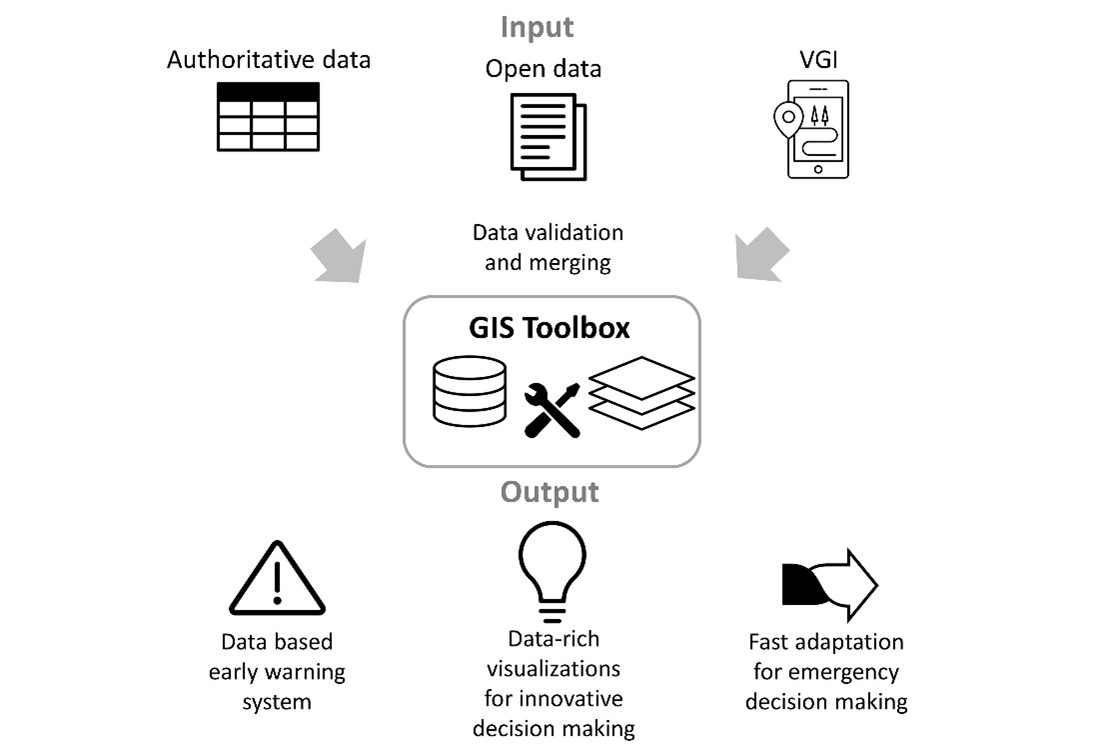The toolbox (WP2)

The aim of the toolbox is addressing gaps in existing data sources from the user perspective. We seek to curate datasets in an accessible and user-friendly platform that provides useful visualizations of complex spatial conditions during the COVID-19 pandemic. A risk analysis provides information on different time and spatial scales. One specific gap is that of informal settlements. Analyses of COVID-19-related data often fail to consider the vulnerabilities related to socioeconomic status and the conditions in these places.
This work package expects to strengthen decision making in the pandemic response while providing a more complete picture of its impacts toward vulnerable groups – including social and economic issues. Therefore, our research integrates multiple data types into a coherent framework (from WP1) using a replicable toolbox. These data types include open, authoritative, and crowdsourced data (e.g., volunteered geographic information). We are co-designing the toolbox with local stakeholders who work with vulnerable groups in Brazil, such as NGOs, authorities, and scientists. These stakeholders are involved in the entire research process, which included assessing the local needs, validating the first prototype of the toolbox, and testing the beta version.
